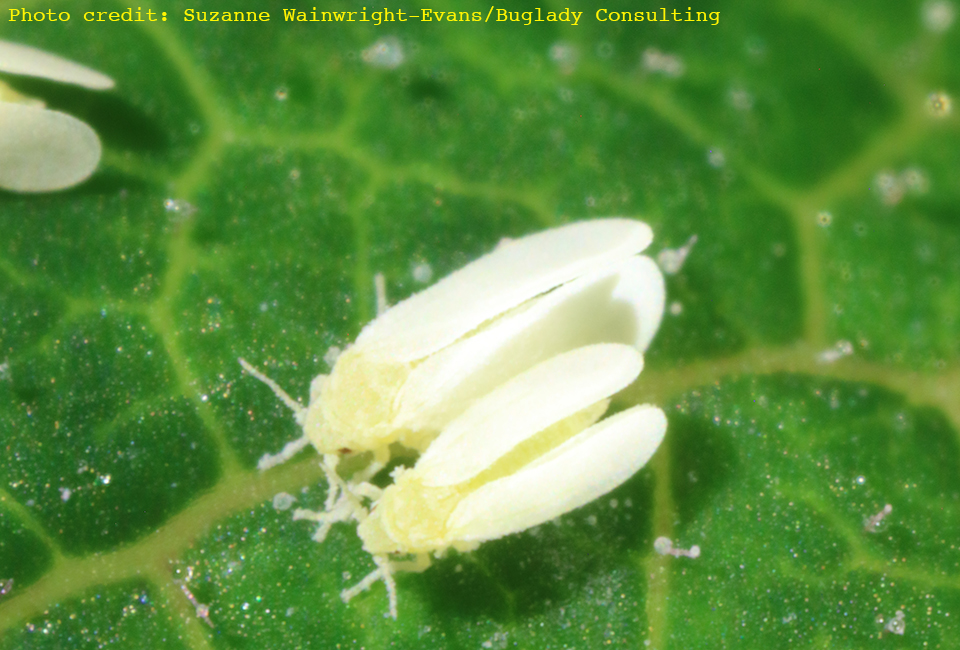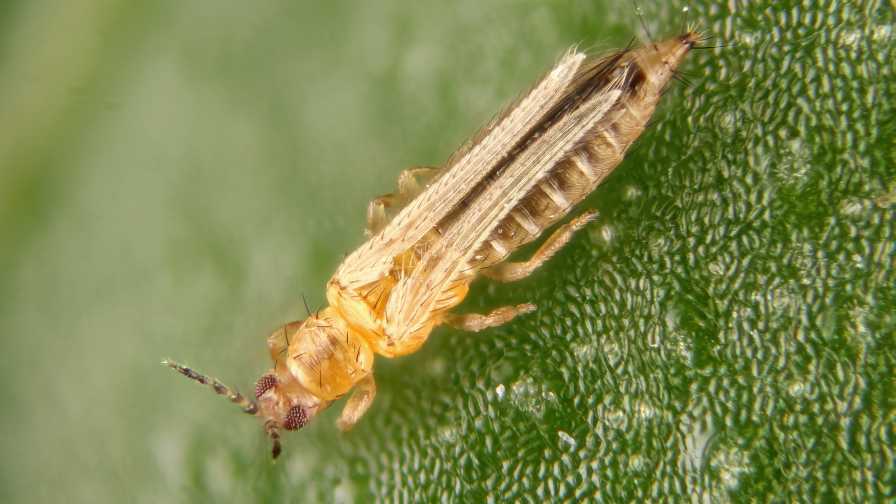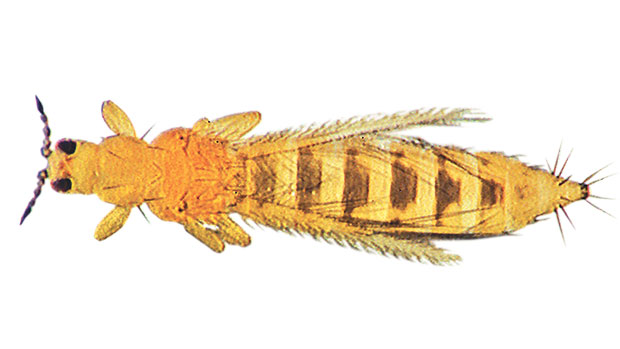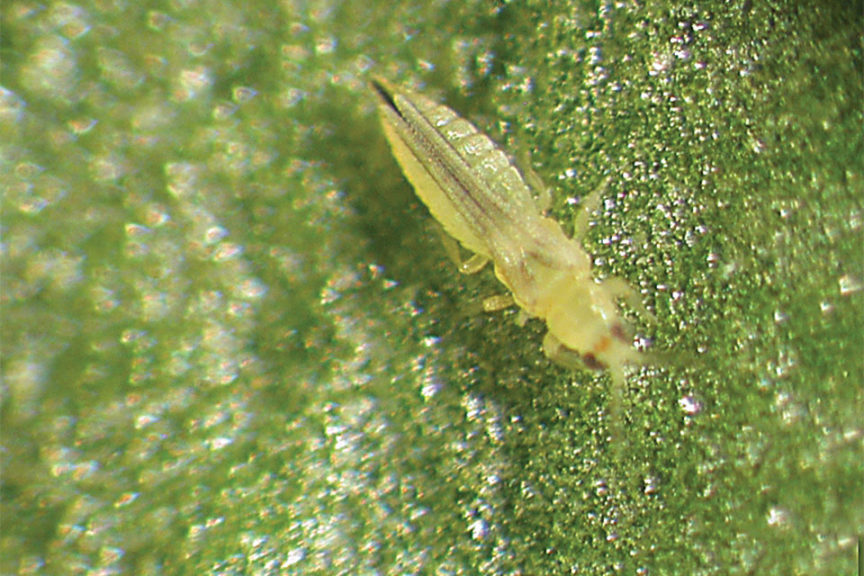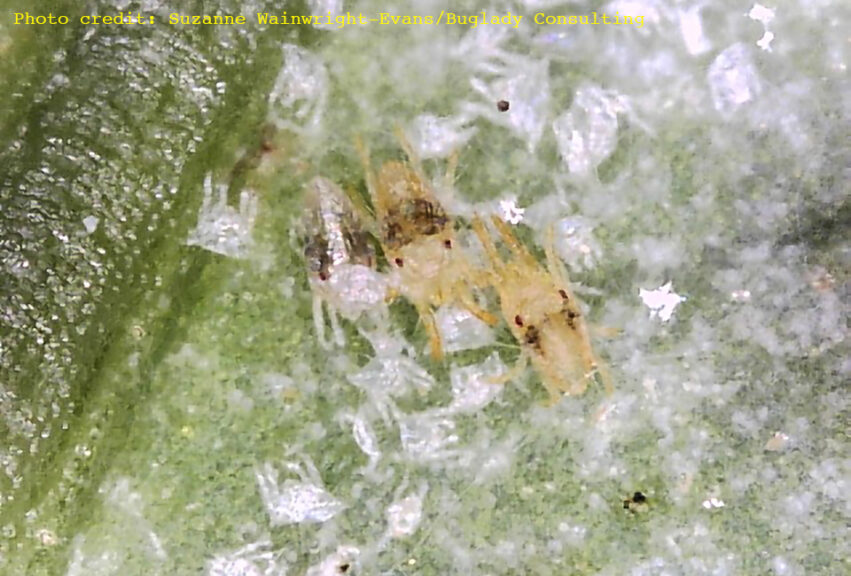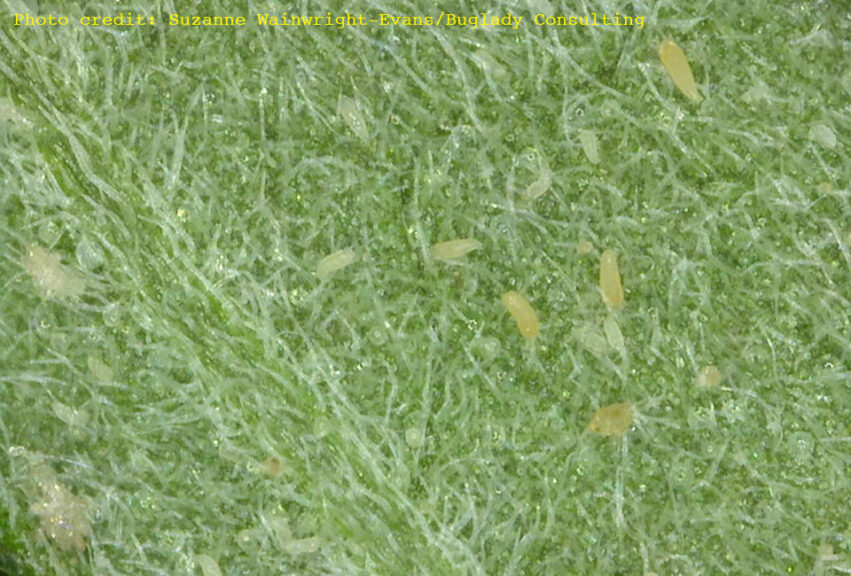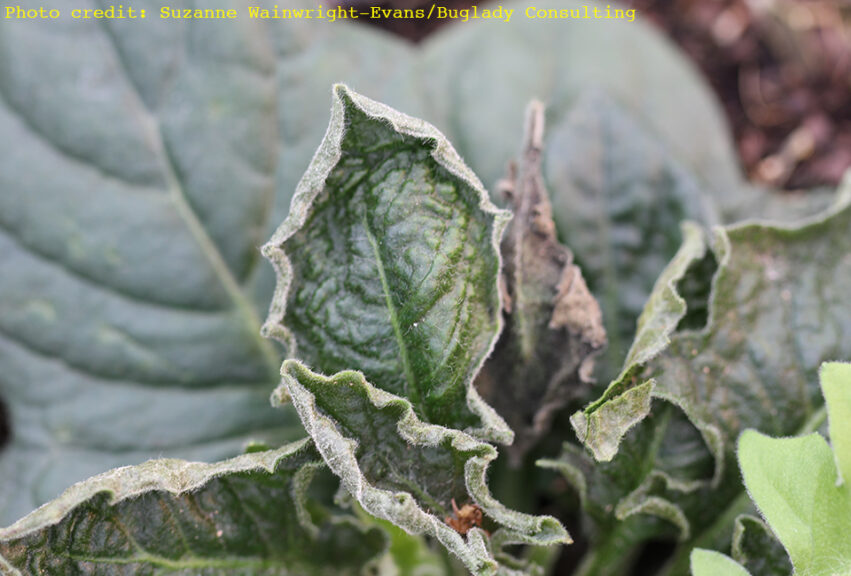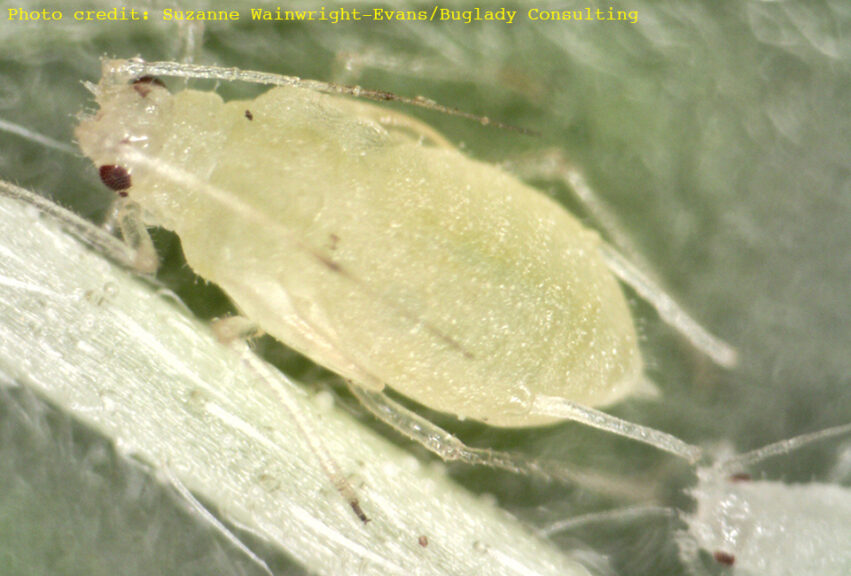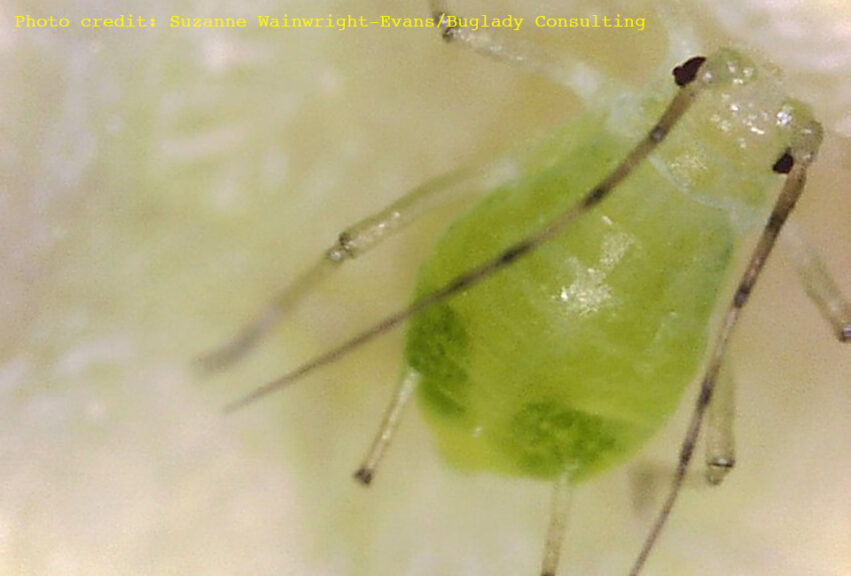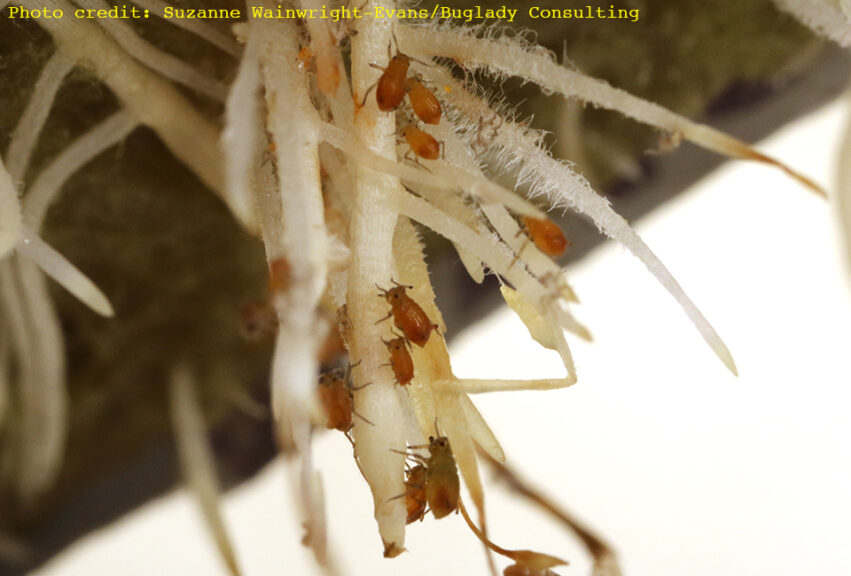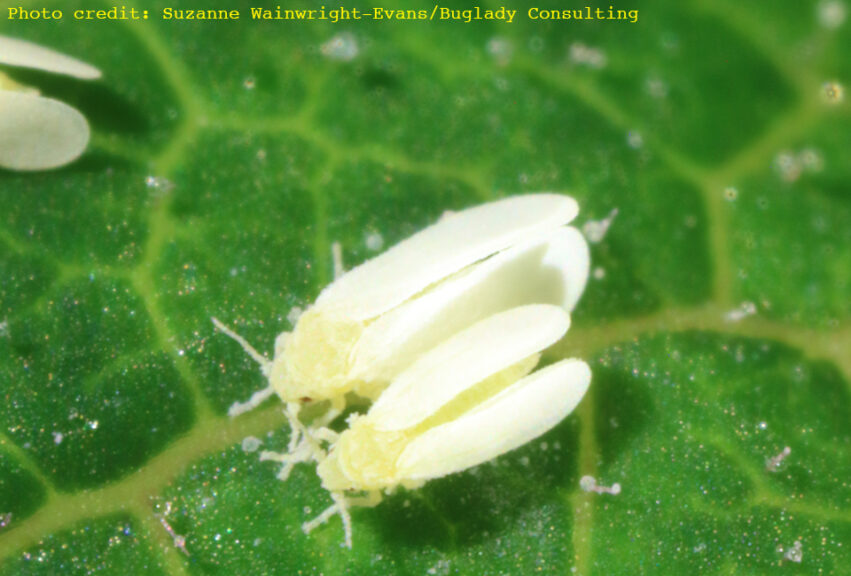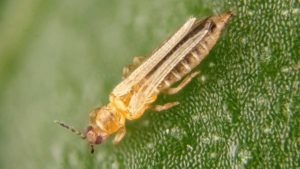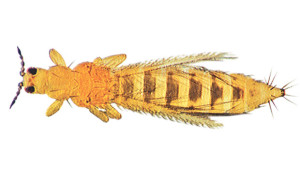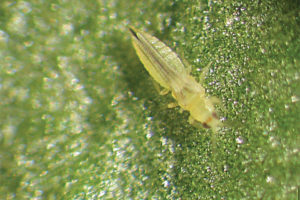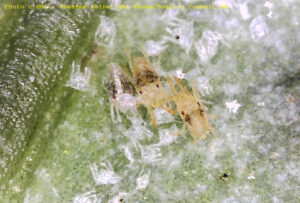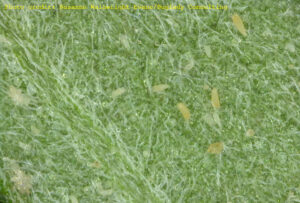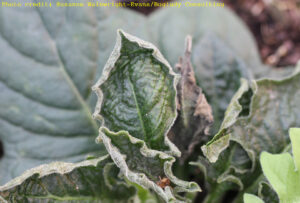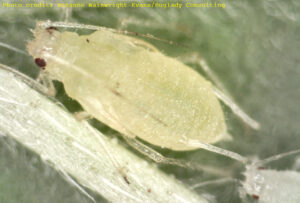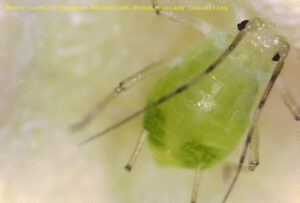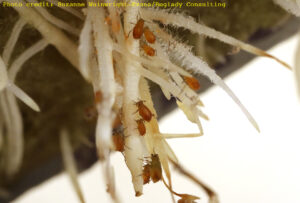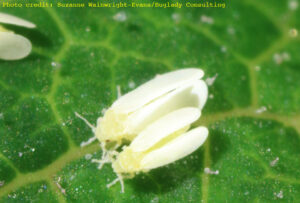Quick Guide To 10 of the Worst Greenhouse Pests
Sometimes half the battle of controlling pests is identifying the right pest and having a reliable source to go to when you need to ask questions about management. This reference tool covers ten of the worst pests that plaque greenhouse growers of ornamentals, vegetables, and cannabis/hemp. It includes some ID pointers to help you identify the right pest, along with some good resources to turn to for help.
Western Flower Thrips (Frankliniella occidentalis)
Crop categories affected: Ornamentals, Vegetables
Ranking: Treat It Yesterday
How Do I Know I Have the Right Species?
- WFT is one of the most commonly found species in greenhouses. It causes streaking on blooms and distortion to foliage.
- Eggs inserted into plant tissue so not visible
- Immatures (larva) are wingless and creamy colored
- Pupate in the soil but can also pupate in flower blooms
- Adult less than 2 mm with different color variations
- Fine hairs on the pronotum (behind head) between two setae
- Red ocelli (spots between eyes)
- Adults have wings
- Easy to find on yellow sticky cards or by banging out blooms/foliage onto paper
Researcher resources:
- Dorith Rotenberg/North Carolina State University
- Sarah E. Jandricic/Ontario Ministry of Agriculture, Food and Rural Affairs (OMAFRA)
- Simple key to important thrips pests of Canadian greenhouses
Onion Thrips (Thrips tabaci)
Crop categories affected: Ornamentals, Vegetables, Cannabis/Hemp
Ranking: Treat It Yesterday
How Do I Know I Have the Right Species?
- Found throughout greenhouses but not as often as WFT. Often feeds on foliage, causing white spots.
- Eggs inserted into plant tissue so not visible
- Immatures (larva) are wingless and creamy colored
- Adults look like WFT and can be pale yellow to dark brown. ~ 2 mm
- Two pairs of long coarse hairs on the bottom of the pronotum
- Gray ocelli (spots between eyes)
- Adults have wings
- Easy to find on yellow sticky cards or by banging out foliage onto paper
Researcher Resources:
- Sarah E. Jandricic/OMAFRA
- Simple key to important thrips pests of Canadian greenhouses
Chilli Thrips (Scirtothrips dorsalis)
Crop categories affected: Ornamentals, Vegetables, Cannabis/Hemp
Ranking: Treat It Yesterday
How Do I Know I Have the Right Species?
- Often see damage on plant first. Browning on flower buds or scarring on leaves. Can also damage fruit.
- Eggs inserted into plant tissue so not visible
- Immatures are wingless, very small, and creamy colored
- Adults are pale yellow-colored with red dots (ocelli) on head
- Adults about 1 mm long, half the size of a western flower thrips (Frankliniella occidentalis)
- Abdomen has small dark bands with some dark blotches
- Three pairs of longer coarse dark hairs on the bottom of the pronotum, middle pair distinctly longer than the others/
- Adults have wings
Researcher resources:
- Lance Osborne/University of Florida Institute of Food and Agricultural Sciences
- Dan Gilrein/Cornell University
- Sarah E. Jandricic/OMAFRA
- Simple key to important thrips pests of Canadian greenhouses
Twospotted Spider Mite (Tetranychus urticae)
Crop categories affected: Ornamentals, Vegetables, Cannabis/hemp
Ranking: You’re too late
How do I know I have the right species?
- Damage, white stippled spots on leaves. With high populations, webbing can be visible
- Bodies are creamy to red in color. Sometimes they can look greenish. On lighter forms, the two spots on their backs are visible
- Larva has three pairs of legs; nymphal stages and the adults have four pairs of legs
- Adults are approximately 0.5mm
- No wings or antenna
- Clearish to creamy eggs are visible on leave surfaces, perfectly round and smooth
Researcher Resources:
Hemp Russet Mite (Aculops cannabicola)
Crop categories affected: Cannabis/hemp
Ranking: Treat It Yesterday
How Do I Know I Have the Right Species?
- Can cause distorted leaves, smaller buds, discoloration, and sometimes causes leaves to fold
- Found on leaves, petioles, and buds
- Egg so small it is almost impossible to find. Laid on surface of plant tissue.
- Body shape like a carrot, tapered on one end
- Pale color
- Adults only have two pairs of legs and are approximately 0.2 mm. About the length of a leg of a TSSM.
- Takes decent numbers to see plant damage so often missed in early infestation
- Slow moving
- No wings or antenna
Researcher resources:
- Whitney Cranshaw/Colorado State University (retired)
- https://hempinsects.agsci.colostate.edu/
- Kadie Britt/Virginia Tech
Broad Mite (Polyphagotarsonemus latus)
Crop categories affected: Ornamentals, Vegetables, Cannabis/Hemp
Ranking: You’re too late
How do I know I have the right species?
- Causes severe distortion of plant leaves
- Eggs elliptical with white tufts on them; tufts look similar to white dots. Approximately 0.08 mm
- Adult females are 0.2 mm long, while males are slightly smaller and oval in shape
- Clear to creamy in color
- Males often carry the females around on their backs and can run at a decent speed
- Female back legs are whip-like appendages, males have enlarged back legs
- No wings or antenna
Resources:
Dan Gilran/Cornell
Featured Creatures: Broad Mites
Cannabis Aphid (A.K.A. Hemp aphid, Bhang aphid) (Phorodon cannabis)
Crop categories affected: Cannabis/Hemp
Ranking: Treat It Yesterday
How do I know I have the right species?
- Can cause loss of vigor in plant, discoloration of leaves, honeydew
- Under certain indoor growing conditions, eggs have been found but not believed to be viable unless they have cooling period. They are shaped like jellybeans and laid green turning black.
- Larger aphid species > 2.0mm
- Longer body shape, not as round as other aphids
- Antennae long with horn-like projections between the bases of the antennae
- Long cornicles, solid light colored
- Color can range from cream to green to pink/green
Researcher resources:
- Whitney Cranshaw/Colorado State University (retired)
- https://hempinsects.agsci.colostate.edu/
- Kadie Britt/Virginia Tech
Foxglove Aphid (Aulacorthum solani)
Crop categories affected: Ornamentals, Vegetables
Ranking: You’re too late
How Do I Know I Have the Right Species?
- Causes distortion on plant tissue
- Can overwinter in greenhouses in temperate climates
- Likes cooler temperatures
- Larger aphid, 1.5 mm to 3.0 mm. Longer-shaped body, not as round
- Light green with slightly darker green spots at the base of the cornicles on the body
- Tips of cornicles dark
- Antennae and legs have darkened joints
Researcher Resources:
- Sarah Jandricic/OMAFRA
- John Sanderson/Cornell University
Root Aphid (Rhopalosiphum rufiabdominalis)
Crop categories affected: Ornamentals, Vegetables, Cannabis/Hemp
Ranking: Treat It Yesterday
How Do I Know I Have the Right Species?
- Causes loss of plant vigor
- Normally found on roots but can also be found in foliage or walking on soil surface.
- In protected culture not seeing egg production
- Adult wingless forms are approximately 2.0 mm
- Body color dark olive green to cream. Sometimes with red/maroon tinges
- Cornicles are visible but not long
- Cauda is short
Researcher Resources:
- Whitney Cranshaw/Colorado State University
Sweet Potato Whitefly B-Biotype, Silverleaf Whitefly (Bemisia tabaci)
Crop categories affected: Ornamentals, Vegetables, Cannabis/Hemp
Ranking: Treat It Yesterday
How Do I Know I Have the Right Species?
- Reduction in vigor and yield of infested plants. Chlorosis of foliage from feeding.
- Honeydew production, causing sooty mold
- Adults wings are white with yellow bodies and look similar to greenhouse whitefly (Trialeurodes vaporariorum)
- Adults hold wings tent-like over their body, about 0.9 mm
- Eggs are small 0.1 mm tall, bullet-shaped, and stand on end. When laid white, turn dark close to hatching.
- Immatures, nymphs, are yellow and can resemble scale insects
- Later nymphs have deep-red eyes and sides slope down to leaf
- When adults emerge from nymphal stage, a skin casing is left behind.
Researcher Resources:
- Erfan Vafaie/Texas A&M University





